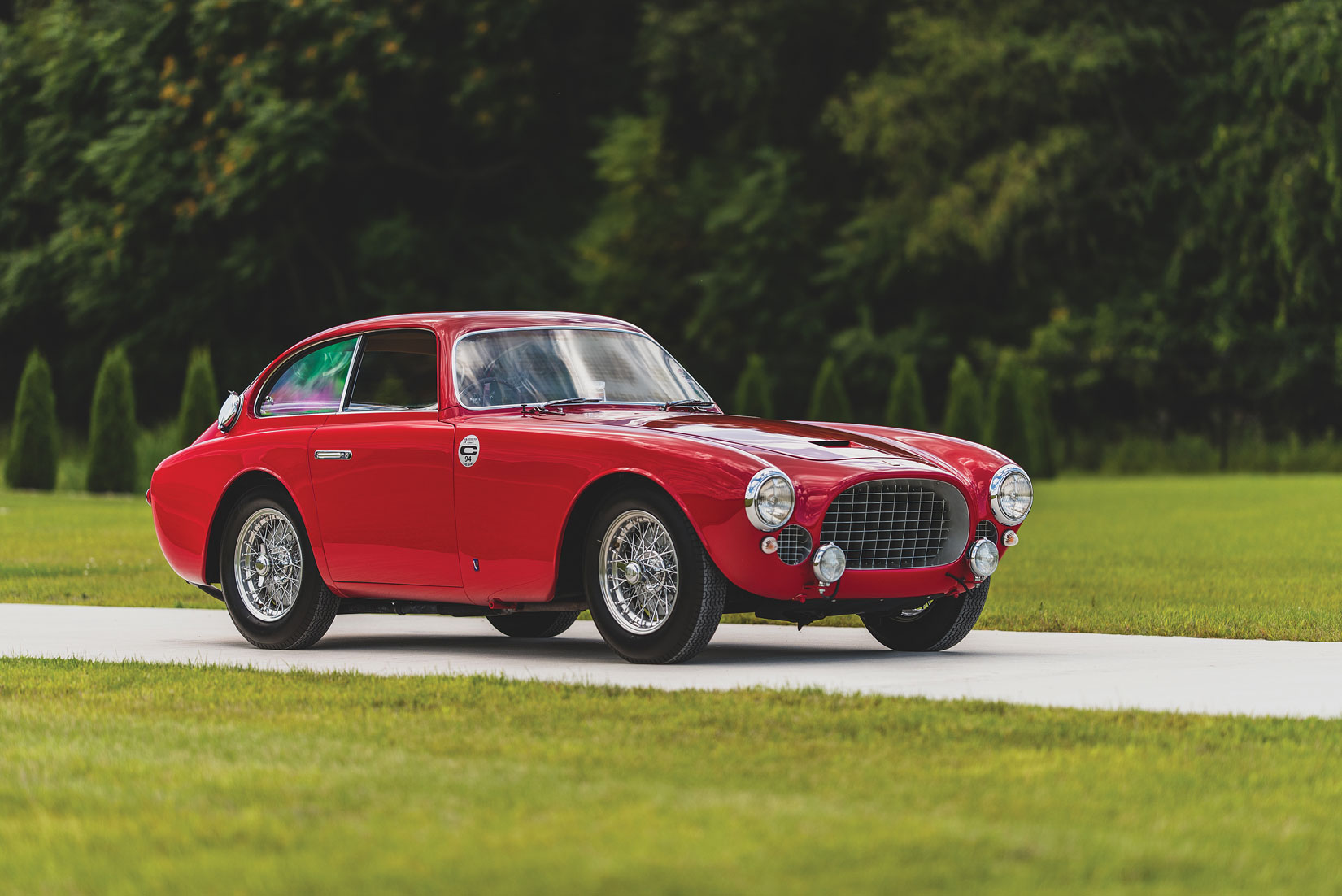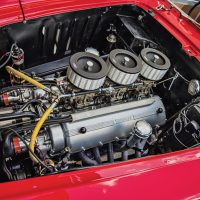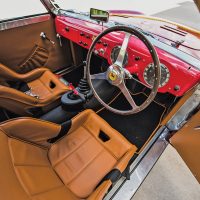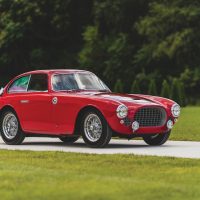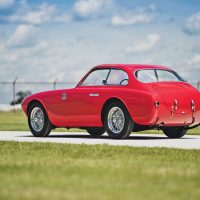SCM Analysis
Detailing
| Vehicle: | 1952 Ferrari 225 S Berlinetta by Vignale |
| Years Produced: | 1952 |
| Number Produced: | 6 |
| SCM Valuation: | $1,237,500 |
| Tune Up Cost: | $3,000 |
| Chassis Number Location: | Side frame rail towards the front of engine |
| Engine Number Location: | Right side of engine near the rear |
| Club Info: | Ferrari Club of America |
| Website: | http://www.FerrariClubofAmerica.org |
| Alternatives: | 1952 Maserati A6GCS, 1952 Talbot-Lago T26 Grand Sport, 1952 Jaguar C-type |
| Investment Grade: | A |
This car sold for $2,810,000, including buyer’s premium, at RM Sotheby’s Elkhart Collection sale in Elkhart, IN, on October 24, 2020.
The 225 is indeed a serious Ferrari race car, one of the unsung heroes of the marque’s storied legacy. A small army of examples attacked endurance racing with valor and success. If you are fortunate enough to come across one, you’ll want to give it a long look. But you’ll also need to know what you’re looking at, as the 225 is not as well known as its 250 brethren.
Get out your decoder ring
The prefix number in a Ferrari’s type is traditionally the key to what is under the hood. Often the number indicates the displacement of a single cylinder. Multiply the number times the number of cylinders and you have the displacement of the engine. In the case of a 250 GT, multiply 250 times 12 and you get 3,000 cc, or three liters. Later cars were often named with a combination of the total displacement and the number of cylinders, ergo a 308 GTB with a 3-liter, 8-cylinder engine. Of course, Ferrari threw some curves, as in a 365 Boxer where the prefix tells us the car has a 4.4-liter engine, whereas the 512 Boxer prefix tells us the car has a 5-liter, 12-cylinder engine.
Competition rules dictated the size of Ferrari’s competition engines, but the production side had no such constraints. Throughout the years, the size of Ferrari’s engines has steadily grown. The first Ferrari, the 125 Sport, featured a 1.5-liter engine. That was followed by a 159 and then the 2-liter 166. Engine sizes have steadily progressed to the current 812. The logical deduction would be that the 812 is an 8-liter, 12-cylinder engine, but once again, Ferrari has changed the rules. The 812 is actually a 6.5-liter engine. The 8 indicates the 812 has 800 metric horsepower (abbreviated numerous ways, including PS, or “cv” in Italian, “cavallo vapore”). The engine is the largest and most powerful ever used in a production Ferrari.
Which brings us to our subject car, which carries one of the engine-type numbers few people know. The 225 used a 2.7-liter engine, built just before Ferrari came out with its legendary 3-liter 250 engine. This is a variation of Gioacchino Colombo’s famous design with tweaks to the cam followers and intake that were inspired by Aurelio Lampredi. Just 21 or so engines found homes in Ferrari chassis, specifically in 225 Sport models, although one 225 Export was produced.
Messy history
Early Ferrari history is messy, with individual chassis being changed from one model designation to another through upgrades. Other times similar upgrades were made with no change to the model’s designation. Ferrari collector and historian Ed Niles wrote the definitive article on 225s in the first issue of Cavallino magazine. He followed the article with a list of chassis numbers and histories of 23 possible or known 225s. Kudos must be given to Niles, as this was done in 1978, with handwritten letters sent to enthusiasts around the world.
It is generally accepted today that 21 225s were built. This includes 20 even-number competition cars and one odd-number 212 Export that was upgraded to 225 power. Spiders built by Vignale account for 14 of these 225s, and another five are berlinetta models also built by Vignale. Two spiders were built by Touring. Even the cars built by the same carrosseries have individual features.
This 225 S, number 0164ED, is a 225 Sport with a berlinetta body built by Vignale. It is an attractive coupe with a finished interior but lacks the intricate detail often found in Vignale’s Grand Touring projects. The car was built to be a race car and it was used as intended. It has a notable competition history in Europe and a couple of lackluster results in the U.S. There is a notation in the history that it was involved in a rollover accident, but it appears the damage was not significant.
Powertrain swap
At some point the original engine and transmission were removed. That engine was replaced with an engine that the catalog described as having been modified to 3 liters, without identifying its original type. The transmission was replaced with a modern Tremec 5-speed. The replacement engine was restamped to 0164, but the switch did not fool any serious suitors. Photos of the restamp from Marcel Massini’s collection show an obviously incorrect stamp in serif font rather than the original sans serif font. Additionally, it was widely known that the original block was in the late Wayne Sparling’s Ferrari collection.
The original block now accompanies the car, as does the original transmission. They were included in the auction.
The larger-displacement engine and fully synchronized transmission fit perfectly with the previous owner’s usage. He used the car in historic events including the Monaco Historics, the Mille Miglia, Goodwood, and the Arizona and Pebble Beach concours.
Only five similar cars were built, and none have publicly changed hands recently. This one only came to market after a $122m overdraft by the owner’s payroll company. This triggered thousands of bounced paychecks and investigation by those whom you do not want to investigate you. Next came the confiscation of his cars, jets, boats and, presumably, his jockey shorts. I suspect only the jockey shorts may be needed in his next home.
RM Sotheby’s valued this car at $2.5m–$3.5m, with a risky no-reserve. The final bid with commission came in at $2,810,000, right in the sweet spot. The new owner has a trophy for their collection and a great event car, albeit with a major shadow. This is a case where it would benefit the new owner to complete and install the original engine and transmission and seek a Ferrari Classique certification. The certification would clean up any shadows over the car’s authenticity. The owner can later refit the more user-friendly transmission and less-valuable engine should they desire to seriously campaign the car in vintage events. ♦
(Introductory description courtesy of RM Sotheby’s.)
